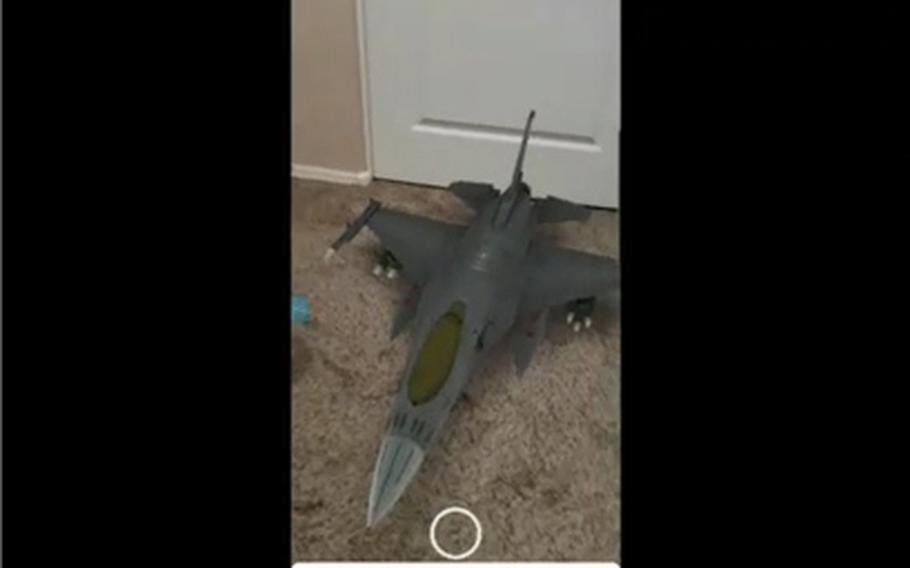
A 3D model of an F-16 Fighting Falcon that the Air Force plans to publish on its redesigned homepage in October is shown in a Defense Media Activity webinar on Sept. 2, 2021. (Matthew Lumbatis/Defense Media Activity)
A redesigned Air Force website will soon let users bring detailed models of A-10 “Warthogs,” F-16 Fighting Falcons and other U.S. military jets into their own homes in both virtual and physical forms.
A handful of computer-rendered military aircraft models will be available for viewing in augmented reality on smartphones or mobile devices. Users will also be able to download files from the site to use in 3D printing.
The expected rollout of the new feature comes amid the military's intensifying use of computer modeling for virtual reality, augmented reality and 3D printing in areas such as pilot training and equipment maintenance. For example, some replacement parts and specialty tools have been 3D-printed.
The capabilities are slated to debut Oct. 1 on a new version of the Air Force website www.af.mil, Master Sgt. Dan DeCook of the Air Force public web team said in a webinar. It will be rolled out to the service’s other sites over the weeks that follow.
“This is a huge thing,” DeCook said. “It’s much more complicated than other parts of the site.”
The 3D graphics to be hosted on the af.mil site will be good enough for public affairs uses but not for printing replacement parts or the like, one official said in the webinar published online this week.
While the site is expected to launch with 10 models, the library will continue to expand, officials said.
“Eventually, we’ll have all of our aircraft available,” DeCook said.
Part of the complexity, he said, is that the detailed computer renderings, which can be viewed from any angle, take up more memory than other media elements.
The webinar was one of several recent sessions showcasing various new features on Air Force sites in the Defense Media Activity’s American Forces Public Information Management System. The system hosts many of the military's public-facing websites.
The augmented reality option, which will let viewers see the aircraft as if it were right in front of them, will work only on mobile devices, said Elexus Parra, host of the webinar.
On most 3D models, the computer program will allow for a variety of scales to be entered based on the printer’s size and capabilities.
At Texas’ Goodfellow Air Force Base, instructors began “stepping away from PowerPoint slides” and two-dimensional drawings of military equipment in favor of 3D models to help train imagery intelligence analysts to recognize them from various angles, the Air Force’s 315th Training Squadron said in a statement earlier this year.
NASA has already made 3D-printable versions of spacecraft, lunar landing sites and extraterrestrial terrain available on one of its websites.